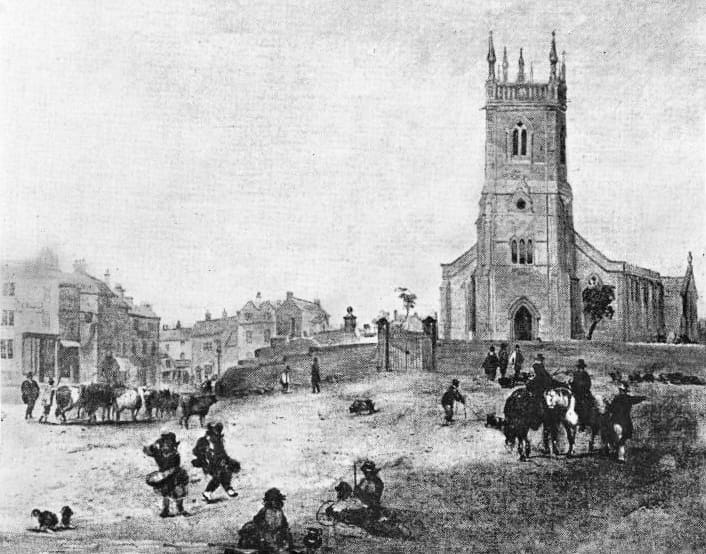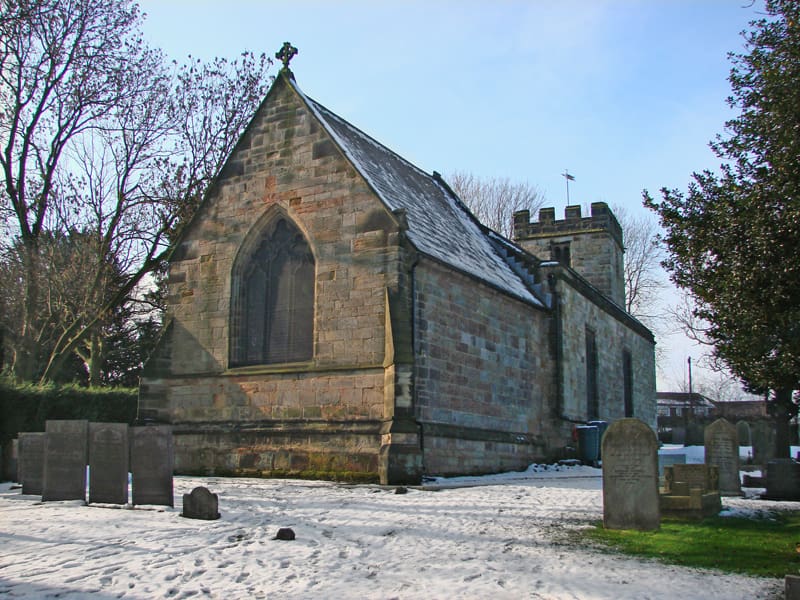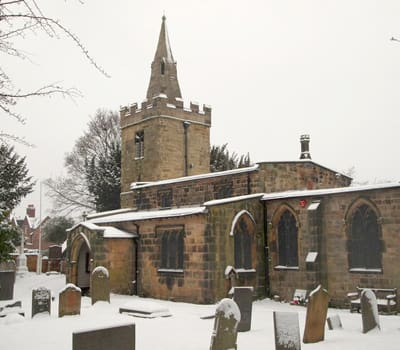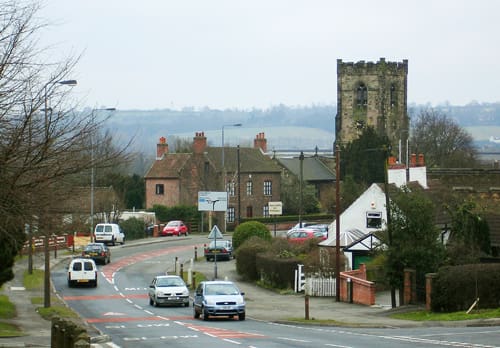The parish church of St Mary the Virgin has stood on its present site since the mid 12th century and until 1848 served the whole town of Ilkeston. Since 1848 three new parishes were formed to serve the spiritual needs of the rapidly expanding town. The building contains many features of interest and architectural importance. Of the original 12th century building, only the three Norman pillars and arches still remain. These form part of the south nave arcade.
In or around the year 1200, a tower was erected at the west end and approximately fifty years later a north aisle was added to the nave. A few years after, an entirely new and enlarged chancel was founded by the then Lord of the Manor, Nicholas de Cantelupe, whose tomb can still be seen today beneath the east window of the church.
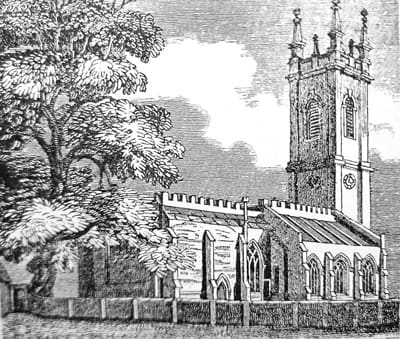
In 1386 a chantry chapel dedicated to St Peter was erected on the north side of the chancel by Joan, the wife of a later Nicholas de Cantelupe. This chapel collapsed during the leaving the east end of St Mary’s open to the elements. The former site of the chapel was eventually used as an extension to the burial ground until its restoration in 1855.
Other features of architectural and historical importance include the stone screen which, though much restored, does include some of its original stonework. The parish chest which dates from the 16th century, once stored the parish registers which themselves date from 1588. The Sedilia, which features the heads of King Henry the Third and his Queen, Eleanor of Provence, along with the Piscina, featuring the carved heads of a priest and a monk, are dated to the late 13th century. The organ was purchased from St John’s church in Paddington, London in 1866 and is believed to have been used by Mendelssohn. The organ has occupied its present position since 1990.
The tower once featured a spire and, although no precise date can be found regarding its erection, was certainly in existence by the late 16th century, being featured on the earliest known map of the town dated 1598. The spire collapsed one stormy night in 1714 and was never replaced. A new tower was erected in 1731 but just ten years later a new disaster struck when the roof of the chancel fell in. This exposed the insides of the church to yet more damage and by the early 19th century, St Mary’s was in a state of near complete collapse.
In 1855, Reverend George Searle Ebsworth (Vicar of Ilkeston 1842-1863) undertook a campaign to raise the necessary funds to have St Mary’s restored to some resemblance of its former glory. This restoration, though rescuing the church from inevitable destruction, necessitated the destruction of some of the oldest parts of the church. Parts of the east window had already fallen in while fragments of the ancient chapel of St Peter’s lay scattered around the church yard. The tomb of William de Cantelupe (died (c) 1308) was dismantled and removed from the church while the tomb of his father Nicholas, was moved from the centre of the chancel aisle to its present position beneath the east window. Though lost for over 150 years, fragments of William’s tomb were found during excavations in the grounds of the former vicarage of St Mary’s (see Ilkeston’s Archaeology).
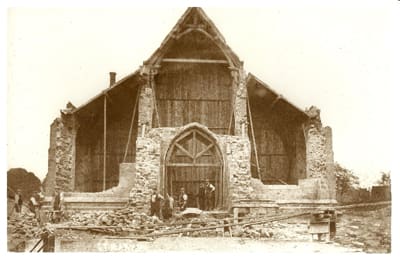
In 1910, the tower and the west end of the church was dismantled and an extension consisting of a further three bays was added to the church, thus almost doubling its capacity. This work was undertaken during the incumbency of Reverend Mollan Williams (Vicar of Ilkeston 1907-1915).
Further restoration work took place in the 1960s during which much work was carried out on the exterior of the church. The replacement of stonework, pointing and the cleaning of the windows was later followed by a complete redecoration of the interior.
Rectors of St Mary’s
1220 William de Muskham, 1290 William de Ilkeston, 1322 William de Loscoe, 1334 John de Kendale, 1341 Thomas de Saxeby, 1349 William de Broydeston, 1351 William de Lenton, 1375 Stephen de Gundale, 1377 Richard de Braundeston
Vicars of St Mary’s
1401 Hugh de Thurgaton, 1402 John de Ilkeston, 1418 Richard de Ilkeston, 1446 Robert Edmund, Richard de Nottingham, 1497 Robert Brownlow, 1510 Robert Aston, 1536 William Carter, 1568 John Wyttor, Thomas Howell, 1573 Richard Durdan, 1588 Thomas Lowe, 1592 George Mellor, 1629 Thomas Lowe, 1633 William Fox, 1680 John Wilson, 1695 Henry Courtman, 1710 Humphrey Courtman, 1736 , Matthew Birch, 1748 George Allen, 1802 Jervase Brown, 1842 George Searle Ebsworth, 1863 James Horseburgh, 1873 James Francis Nash Eyre, 1887 Edward Muirhead Evans, 1907 Charles Mollan Williams, 1915 Archibald William Bell, 1932 Linsan Alfred William Graves, 1948 Reginald Foskett, 1957 James George Brooks Ashworth, 1962 Arthur Charles Robertson, 1985 John Michael Roff, 1991 John Richard Henson, 2000 Allan James Brown, 2010 Michael D Petitt
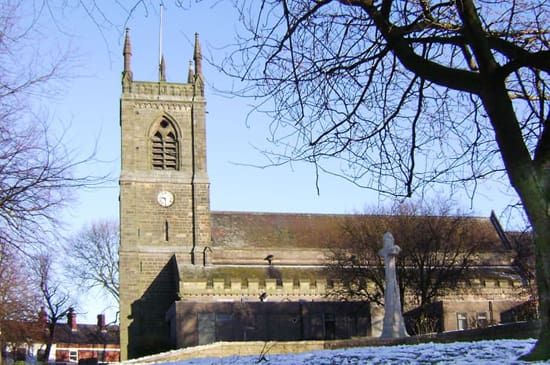
Church Wardens of St Mary’s
Though incomplete, this list contains the names of those known to have served as church wardens during the years shown.
1553 John Day and John Batchelor, 1599 William Walker and Edward Smalley, 1600 John Flamsteed (Snr) and Robert Gregory, 1601 Robert Gregory and John Carrington, 1602 William Harvie and Francis Fullwood, 1603 Percival Norwell and Robert Parr, 1604 … Rossell and William Brentnall, 1605 John England and John Flamstead, 1606 Richard Trueman and William Gregory, 1607 William Parr and John Gregory, 1608 John Fullwood and Thomas Cooke, 1609 Joseph Handford and William Loccall, 1610 Richard Savage and Humphrey Willimote, 1611 William Parr and …, 1612 John Walkden and Humphrey Hutchinson, 1613 John Walkden and William Straw, 1614 Thomas Taylor and Edward Tarrett, 1615 Robert Cowpe and George Flamstead, 1616 Robert Cowpe and George Flamstead, 1617 Robert Hardie and Michael Holt, 1618 John Hardware and Thomas Hunt, 1619 Robert Cowpe and Robert Day, 1620 Robert Cowpe and Robert Day, 1621 Thomas Flamstead, Richard Webster, John Boote and William Gregory, 1622 Robert Day and Anthony Fullwood, 1623 Bartholomew Boote and Thomas Cooke, 1624 Francis Beardsley and John Dawson, 1625 Francis Beardsley and John Dawson, 1626 Nicholas Skevington, John Dawson, Anthony Flamstead and William Straw, 1627 Robert Allestry and William Harrison, 1628 Lawrence Bruxby and Robert Corden, 1629 Lawrence Bruxby and Robert Corden, 1630 … … … … …, 1631 Richard Day and Edward Bannister, 1632 … … … … …, 1633 John Dawson and … …, 1634 John Dawson and … …, 1635 William Flamstead and Richard Wood, 1636 Robert Day and Anchor Taylor, 1637 Francis Cooke and William Dennis, 1638 Francis Cooke and William Dennis, 1639 Robert Cowpe, Ralph Chapman, William Redgate and John Saxton, 1640 John Hellott and William Straw, 1641 John Hellott and William Straw, 1642 Robert Allestry and Richard Day, 1643 Richard Peacocke and William Hayes

